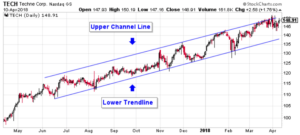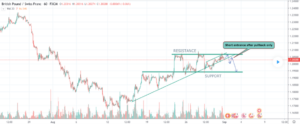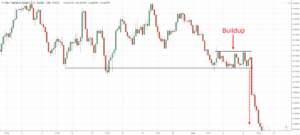Currency Trading was not always the first choice for investors. Most traders like to stick with basic stock trading platforms and methods. But in the last decade, new and improved platforms along with better trading strategies have given people confidence. We have seen tremendous growth in currency trading worldwide over the past couple of years.
In this article we bring to you the 5 most used currency trading strategies that have proven quite effective over the years. Some of these strategies are often used for other traded securities as well along with slight modifications and tools.
Price Action Strategy
Many who trade in the market do not always rely on fundamental analysis for making a choice. One such strategy which is often seen to have been working for the traders is analyzing the recent and past trend analysis of a security. This technique is quite useful for currency trading as well. Bets are placed by using analyzing price movements, rather than solely relying on technical analysis.
This strategy is primarily focused on short term trading and can also be used for medium term trades. Traders look for simple breakout. The goal is to predict the session’s high and low to enter and exit the trade and book a decent profit. Technical analysis tools and programs are often used to accurately identify such breakout points and in order to make an informed decision. Such analysis may include study of trend lines, charts, identifying support and resistance levels, high and low swings and price bands depending on the trader’s requirements and strategies.
Such strategy is most suitable for speculation purposes and is widely used by arbitrageurs and speculators.
Range Trading Strategy
Range Trading Strategy focuses on a simple fundamental of identifying overbought and oversold currency (also known as support and resistance). The traders using this strategy buy during oversold/support periods and sell during overbought resistance periods. This works well when the markets are moving up and down with any marked long-term trend.
There are primarily four types of ranges:
- Rectangular Range- This type of range is easy to ascertain and they give a clear picture of the support and resistance levels. The price moves sideways between an upper resistance and a lower support level with ‘Peaks’ and ‘Troughs’ lying within a horizontal band. The figure below shows a rectangular range.

- Price Channels (Diagonal Ranges)- Diagonal Ranges is another type of range where the price ascends or descends within a sloping trend channel. Such channels can go on for a very long time sometimes even months.

- Continuation Ranges- These are ranges that occur within trends. This includes flags, triangles, flags & pennants. These ranges mostly show a correction in price against a prevalent trend which may be bullish or bearish.

- Irregular Ranges- It is not always possible to identify a pattern on first sight. With Irregular Ranges traders try to avoid extreme prices and basis their assumption that it will revert back to a mean.

Trend Trading Strategy
This strategy works on a simple premise where the trader is of the opinion that the currency will move in the same direction as it is currently trading in. Traders use both price action and other technical tools to identify the trend direction and when it may shift. Traders look for high and low swings along with moving averages and trend lines to make the right decision.
However, even an experienced investor makes sure to use a stop-loss provision or a take-profit provision. This is done in order to book profit when its time and to avoid any huge losses in case of a trend reversal.
While using this strategy, a trader looking for an uptrend, they wish to see the price cross recent highs or atleast stay above prior swing lows. The same is the case if the trader holds a short position; they wish to see the security make new lows. If that is not to be seen, the trader will no longer be interested in holding a short position anymore.
Counter-Trend Trading Strategy
Similar to the trend trading strategy given above, in a counter -trend trading strategy a trader looks for trends but instead waits for the right time to identify a reversal. The trader goes in when he/she sees an opportunity of a trend reversal. This is generally a medium term strategy where position is held for several days or weeks by the trader.
Traders rely on envelope channels (such as Bollinger Bands), indicators (such as the Aroon Indicator) and oscillators (such as the Relative Strength Index or Chande Momentum Oscillator) to make their decisions.
In simple terms, a counter-trend strategy is when investment positions inverse to the current trend. It is also known as swing trading. The traders wish to take advantage of a trend that is about to swing in a new direction. It is not always easy to predict such situations; therefore only advanced traders are seen using such strategy.
Breakout Trading Strategy
Support and Resistance levels are not so hard to read. Although, it is not always easy to judge when a breakout might occur. Traders use head and shoulders pattern, triangles or flag patterns to identify a breakout. Once they think that a breakout can be in motion, that is when they get in on the action. The traders look for an opportunity when the prices break their usual support and resistance levels, this is the time when they place their calls.
Trading Breakouts with buildup is one of the many ways in which a trader makes the trade. A buildup is nothing but a tight consolidation and you’ll notice the range of the candles get smaller.

